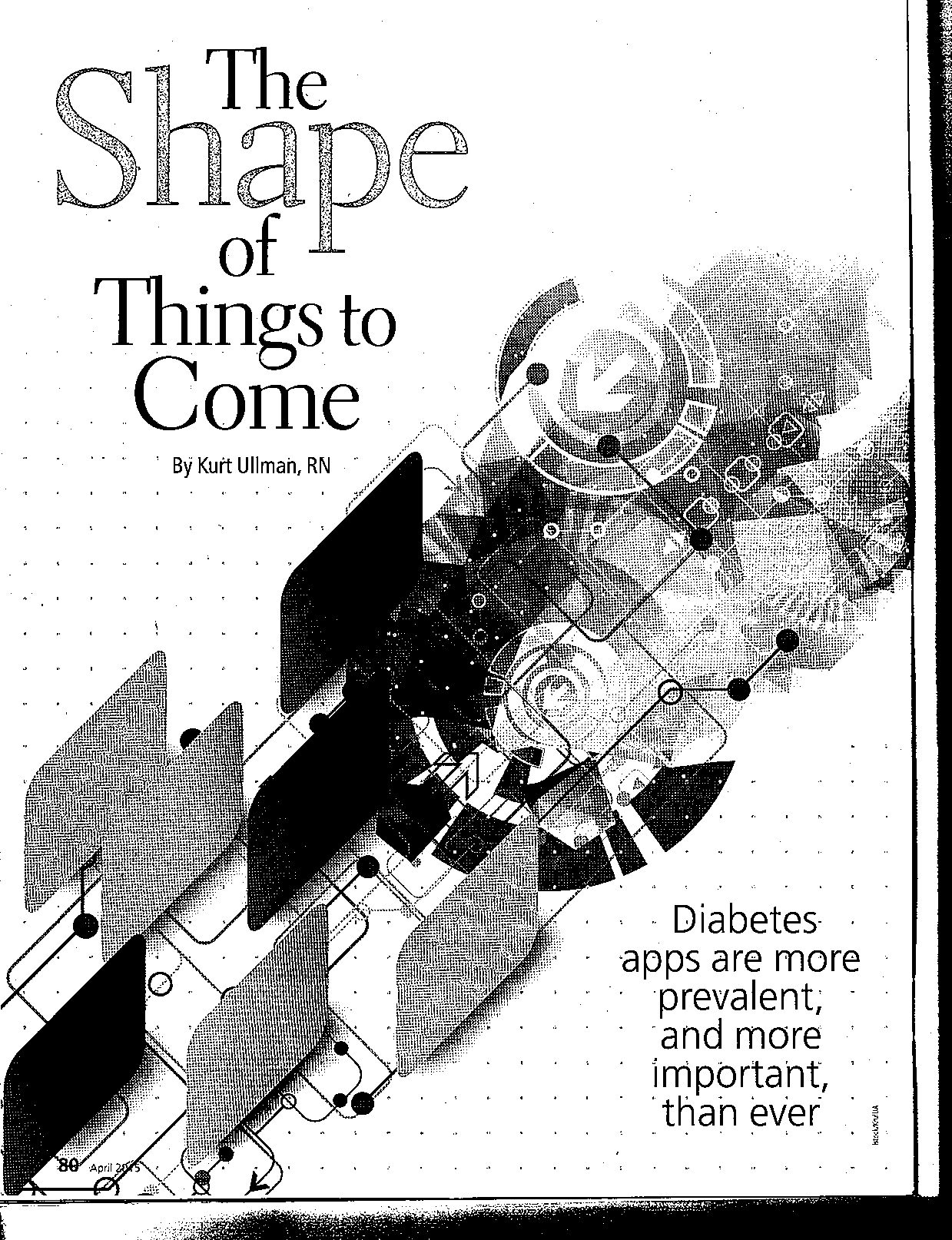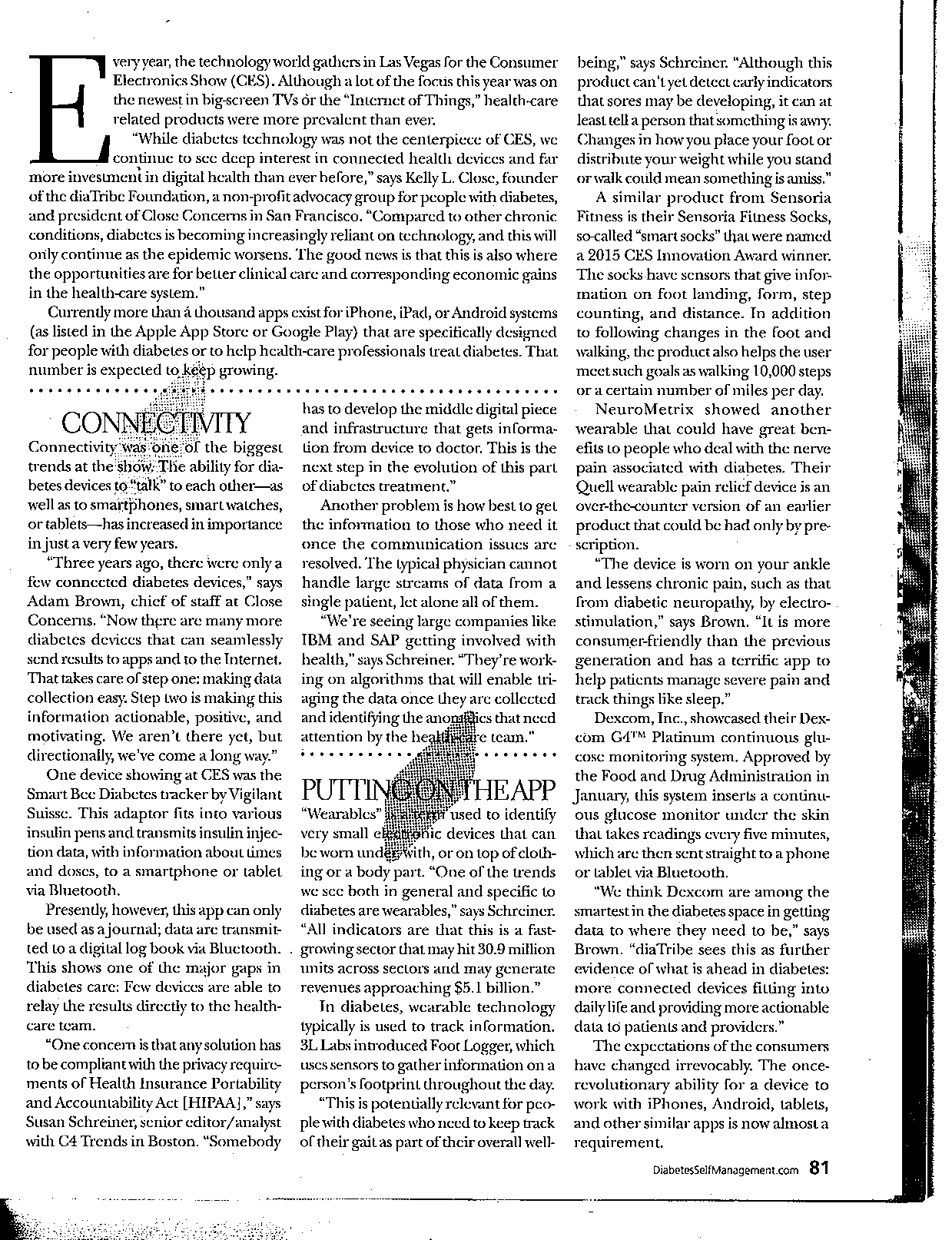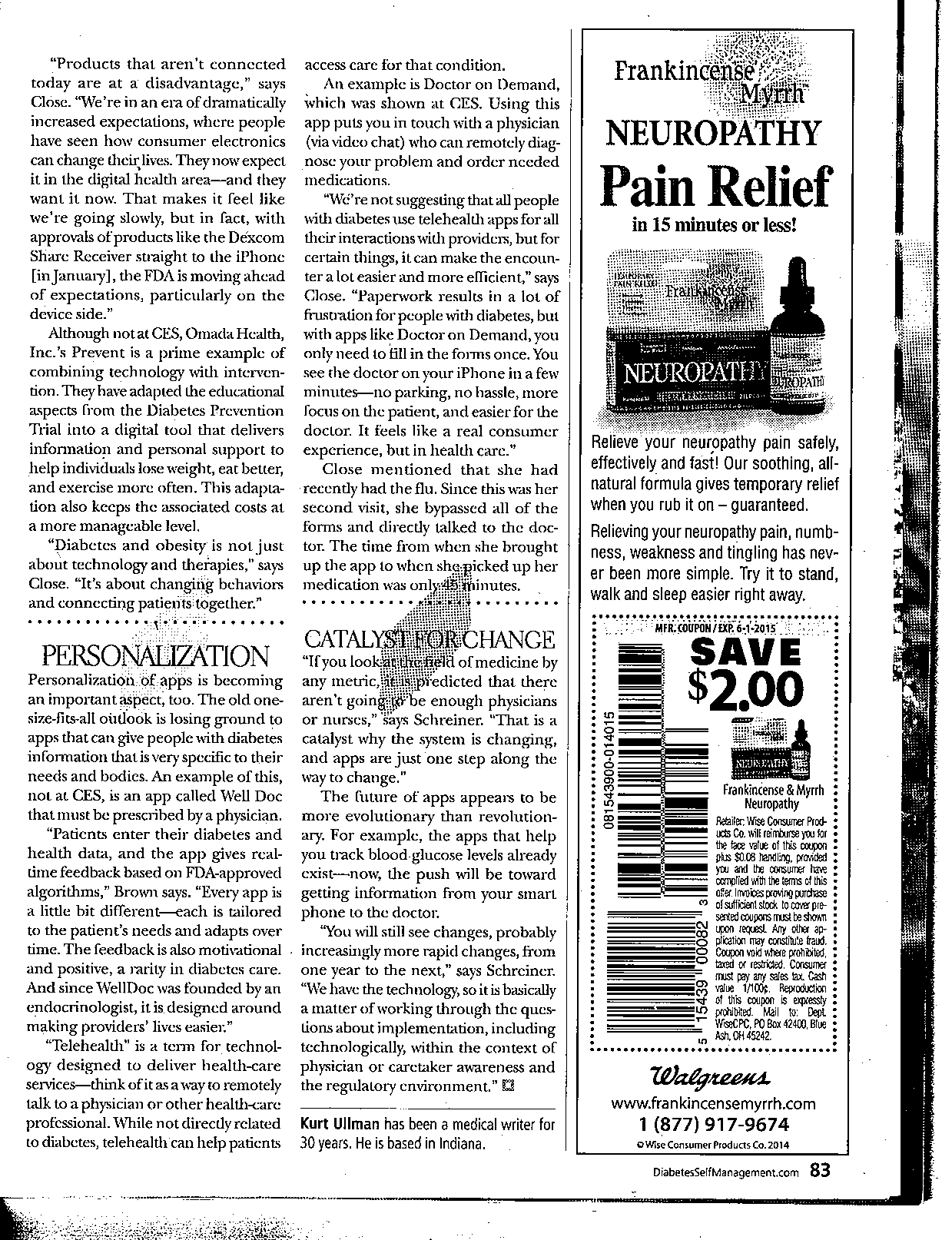“One concern is that any solution has to be compliant with the privacy requirements of Health Insurance Portability and Accountability Act [HIPAA],” says Susan Schreiner, senior editor/analyst with C4 Trends in Boston. “Somebody has to develop the middle digital piece and infrastructure that gets information from device to doctor. This is the next step in the evolution of this part of diabetes treatment.”
“One of the trends we see both in general and specific to diabetes are wearables,” says Schreiner. “All indicators are that this is a fast-growing sector that may hit 30.9 million units across sectors and may generate revenues approaching $5.1 billion.”
“This is potentially relevant for people with diabetes who need to keep track of their gait as a part of their overall wellbeing,” says Schreiner. “Although this product can’t yet detect early indicators that sores may be developing, it can at least tell a person that something is awry. Changes in how you place your foot or distribute your weight while you stand or walk could mean something is amiss.”
“If you look at the field of medicine by any metric, it is predicted that there aren’t going to be enough physicians or nurses,” says Schreiner. “That is a catalyst why the system is changing, and apps are just one step along the way to change.”
“You will still see changes, probably increasingly more rapid changes, from one year to the next,” says Schreiner. “We have the technology, so it is basically a matter of working through the questions about implementation, including technologically, within the context of physician or caretaker awareness and the regulatory environment.”




